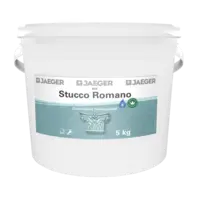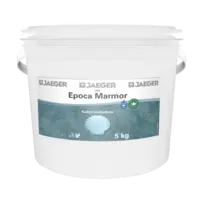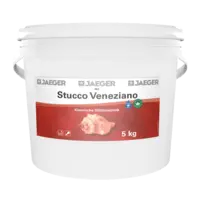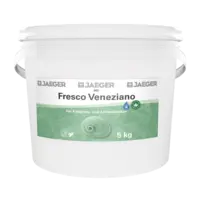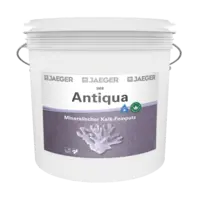Universal Putty for Tiles and Wall Surfaces 808
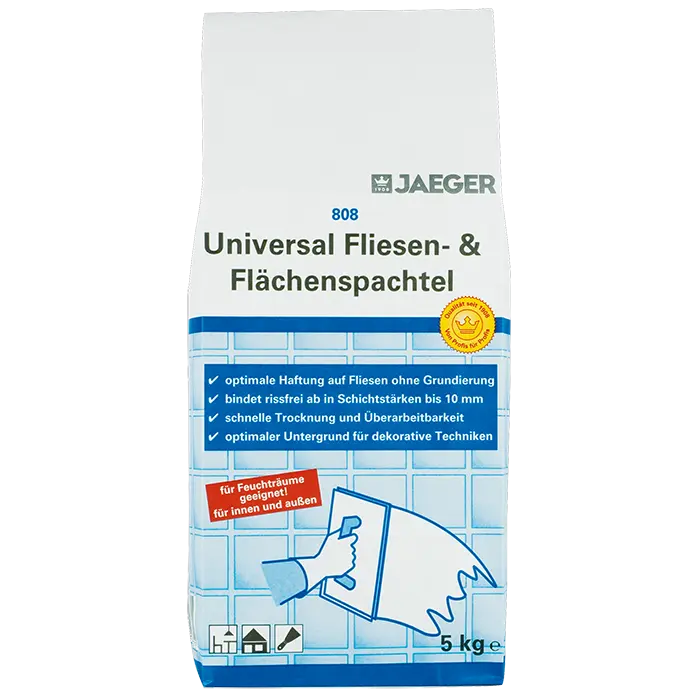
Surface filler for tiles and other surfaces
- Optimum adhesion to tiles without primer
- Sets without cracking in layers up to 10 mm thick
- Optimum substrate for decorative techniques
- Fast drying and can be reworked quickly Easy application of the surface filler
- Cover old tiles with filler or apply filler to tiles and transform them into a jointless bathroom
JAEGER universal tile and surface filler is a cement-based surface filler for filling cracks and holes as well as for repairing, smoothing and levelling tiles, facades, walls and ceilings. The universal tile and surface filler is excellently suited for working on and coating all mineral substrates such as lime, cement and gypsum plaster, concrete, porous concrete, brick and firmly adhering dispersion substrates such as synthetic resin plaster and old dispersion paint coatings.
Universal Tile and Surface Filler also adheres reliably to glass fibre wallpaper, textured plaster, glazed tiles, oil-based bases and fibre cement panels. The filled surfaces can be easily smoothed and felted, ensuring a smooth and attractive finish.
It is important to note that the filler is not suitable for levelling floors or for use on wood, metal, plastic or glass. With a processing time of approx. 30 minutes and a consumption of about 1.0 kg for an application thickness of 1 mm, the JAEGER universal tile and surface filler offers an efficient solution for your renovation and repair projects.
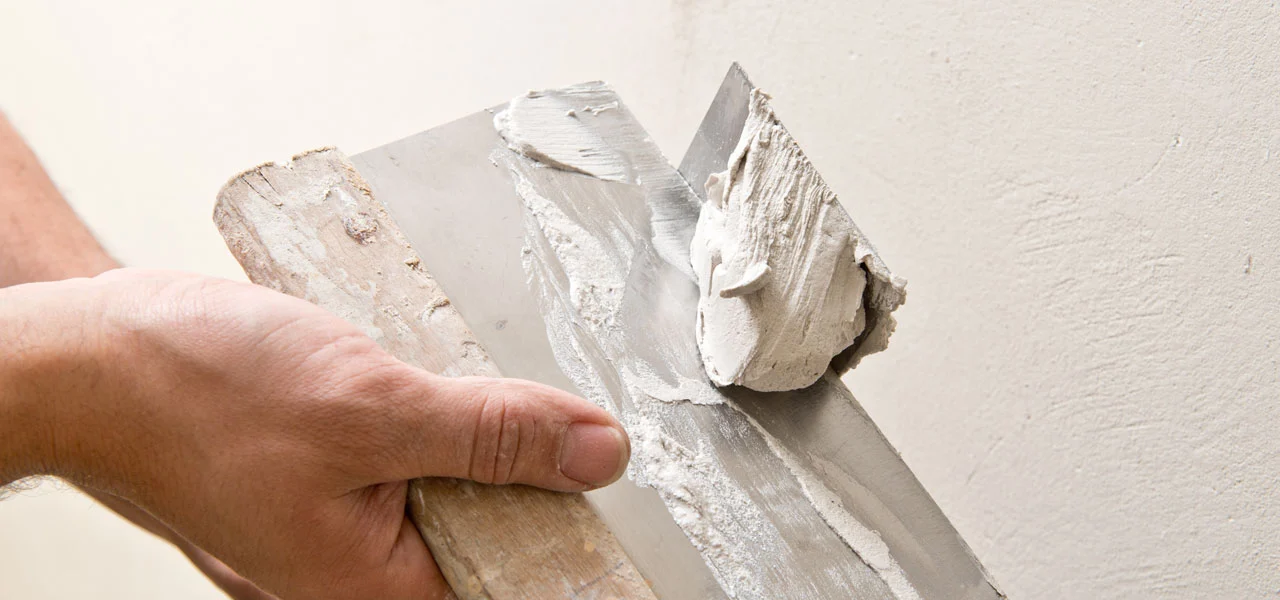
Step-by-step instructions for the surface filler
Step 1: Substrate preparation
Before the surface filler is applied, the substrate must be load-bearing and free of separating agents (dust, mould oil, etc.). Remove poorly adhering paint, elastic or varnish-like paint and loose plaster. Prime highly absorbent, sanding and chalking substrates with a deep primer before filling.
Step 2: Application – levelling tiles or filling tiles
Pour clear, cold water into a clean container and sprinkle in the Jaeger Universal Tile & Surface Filler powder. Stir vigorously to create a lump-free mortar.
The mixed filler can be used for approx. 30 minutes and can be applied immediately to the surface in the desired layer thickness. Unevenness can be smoothed or sanded down after approx. 20–40 minutes (depending on the layer thickness and temperature).
Do not apply any subsequent coats of paint or carry out any bonding work on the surface filler until the filled area has dried completely. Do not fluate the filler layer, and do not paint over with mineral paints.
Once the levelling layer is completely dry, other work processes, such as seamless filling with Deco Wall & Floor or applying other creative techniques, can be carried out in the usual way. A primer is not required for subsequent wallpapering and painting work. The instructions of the paint and adhesive manufacturers for the pre-treatment of cement substrates must be observed.
Processing conditions: Do not apply the surface filler at substrate and room temperatures below +5°C. Setting times are reduced at temperatures above +20°C. Setting times are increased at temperatures below +20°C.
Schritt-für-Schritt-Anleitung für den Flächenspachtel
1. Schritt: Untergrundvorbehandlung
Als Vorbereitung muss der Untergrund tragfähig und frei von Trennmitteln (Staub, Schalöl u. ä.) sein, bevor die Flächenspachtelmasse aufgetragen wird. Schlecht haftende Anstriche, elastische oder lackartige Anstriche und losen Putz entfernen. Stark saugende, sandende und kreidende Untergründe vor dem Verspachteln mit einem Tiefgrund grundieren.
2. Schritt: Verarbeitung – Fliesen überspachteln oder Fliesen spachteln
Klares, kaltes Wasser in ein sauberes Gefäß füllen und das Pulver Jaeger Universal Fliesen- & Flächenspachtel einstreuen. Kräftig umrühren, sodass ein klumpenfreier Mörtel entsteht.
Die angerührte Spachtelmasse ist ca. 30 Minuten verarbeitbar und kann sofort in der gewünschten Schichtdicke auf die Oberfläche gespachtelt werden. Unebenheiten können nach ca. 20-40 Minuten (abhängig von der Schichtstärke und der Temperatur) feucht geglättet oder abgescheibt werden.
Nachfolgende Anstriche auf dem Flächenspachtel und Verklebungen erst nach vollständiger Durchtrocknung der gespachtelten Fläche durchführen. Die Spachtelschicht nicht fluatieren und nicht mit Mineralfarben überstreichen.
Nach vollständiger Durchtrocknung der Spachtelschicht können auch andere Arbeitsvorgänge, wie die fugenlose Spachtelung mit Deco Wall & Floor oder Auftragen von anderen Kreativtechniken, in gewohnter Weise durchgeführt werden. Für nachfolgende Tapezier- und Anstricharbeiten ist eine Grundierung nicht erforderlich. Die Vorschriften der Anstrich- und Klebstoffhersteller für die Vorbehandlung von Zementuntergründen sind unbedingt zu beachten.
Verarbeitungsbedingungen: Den Flächenspachtel nicht unter + 5 °C Untergrund- und Raumtemperatur spachteln. Höhere Temperaturen als +20 °C führen zu einer Verkürzung der Abbindezeit, tiefere Temperaturen hingegen führen zu einer Verlängerung der Abbindezeit.
product data
spreading rate
| paint/roll | spraying |
|---|---|
| 1 m²/kg (at 1 mm) |
item number/shade
| item number | shade |
|---|---|
| 808-0000 | weiß |
size of trading unit/box content
| size of trading unit | box content |
|---|---|
| 5 kg | 1 |

